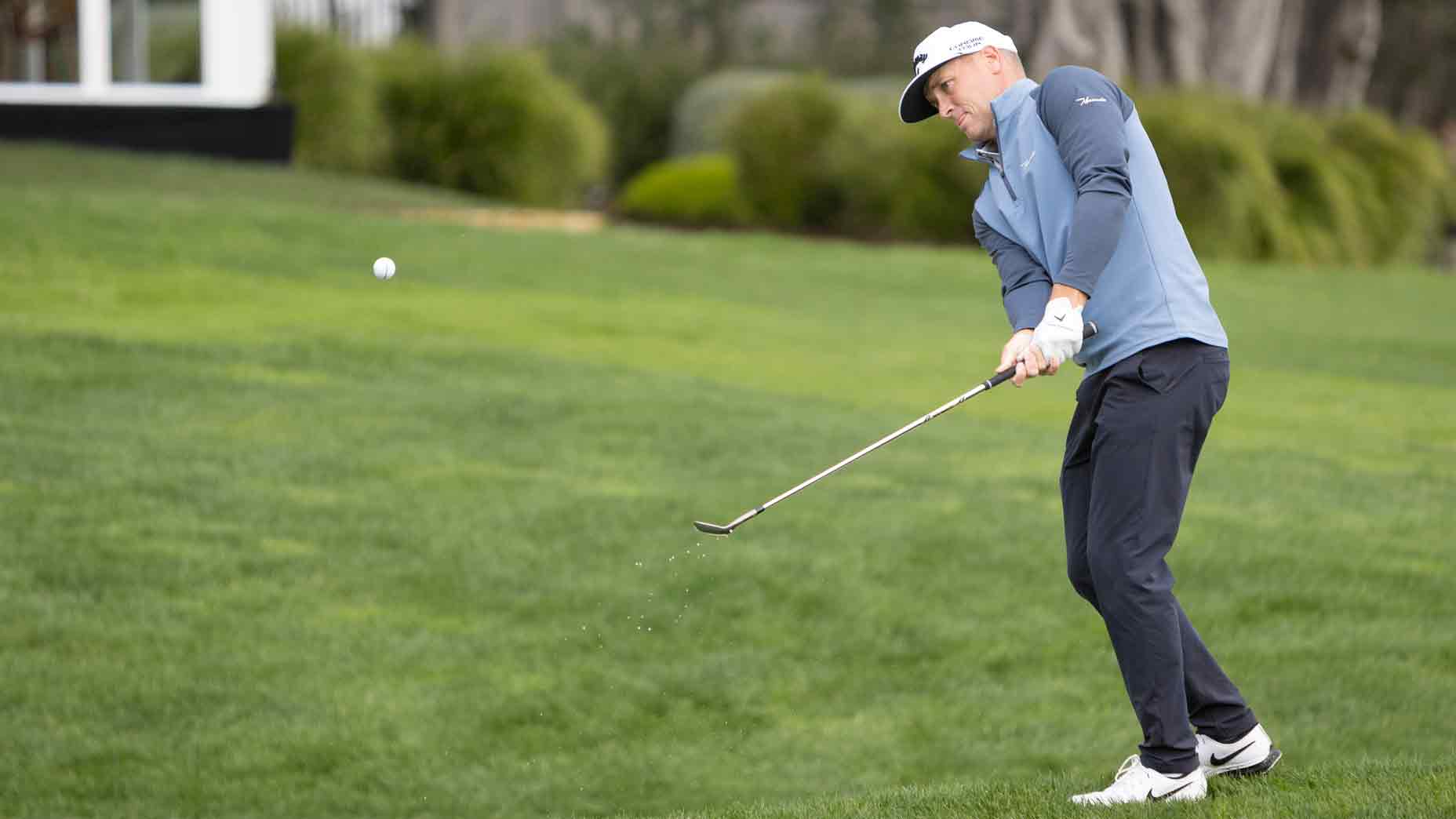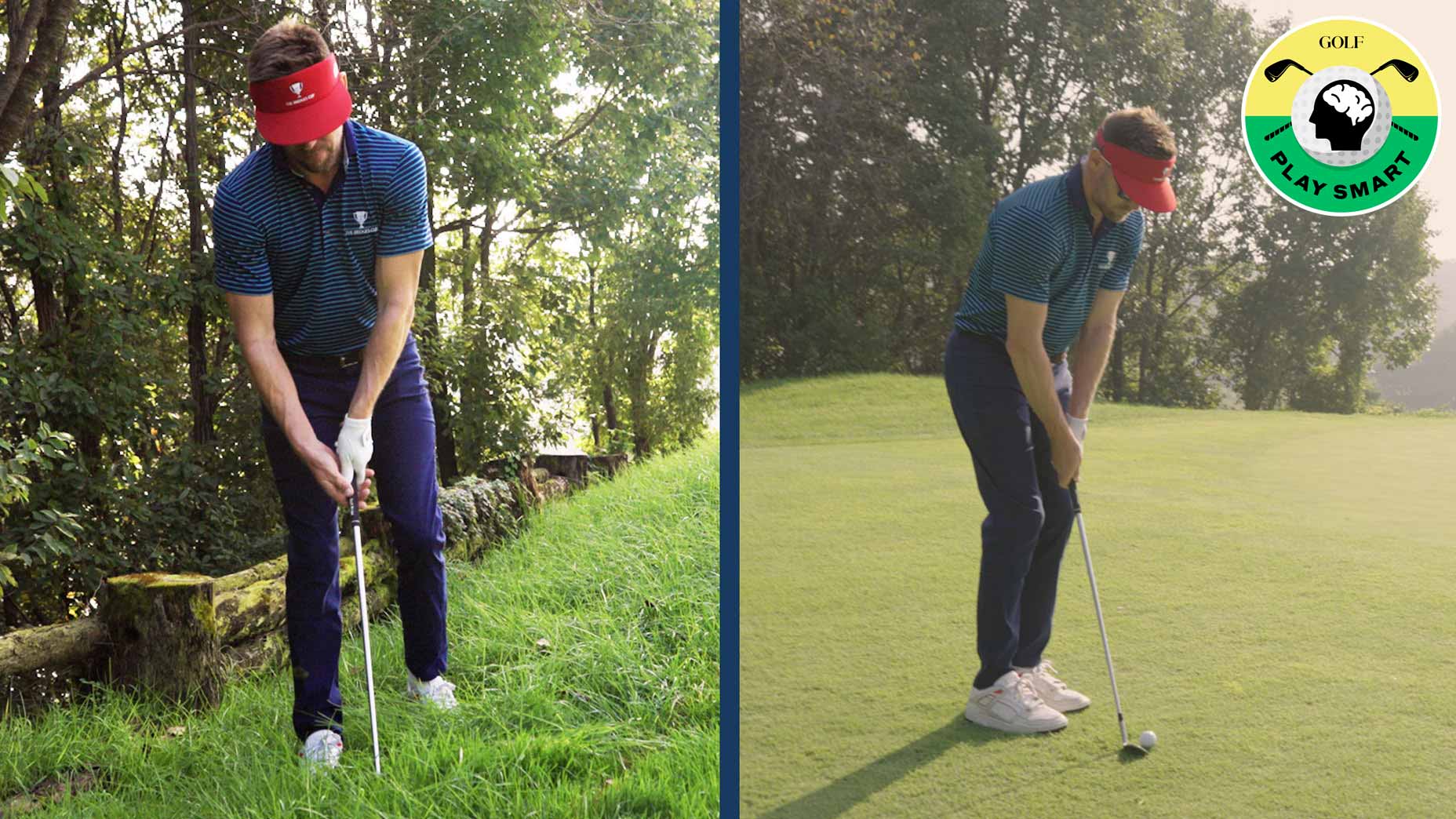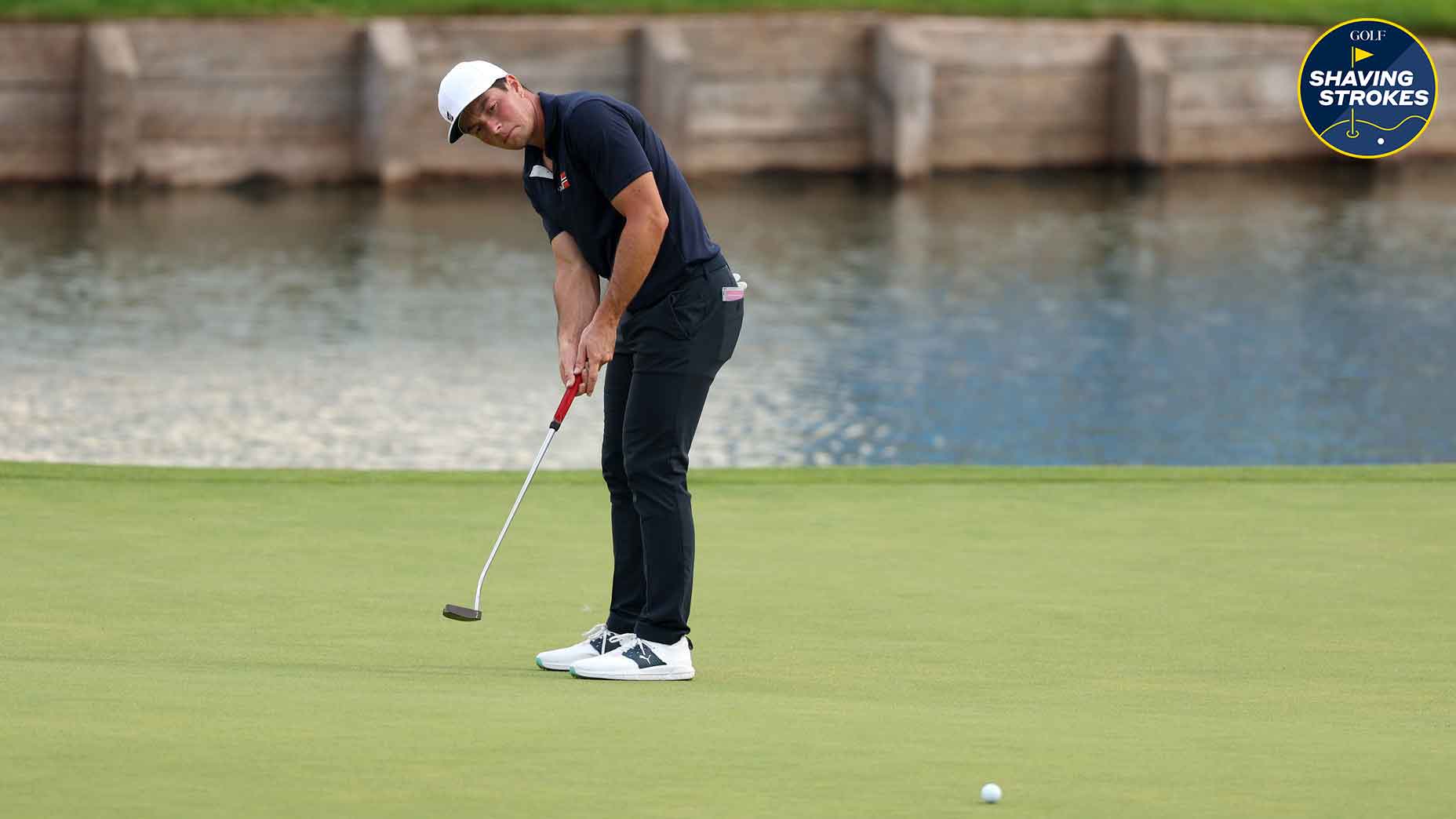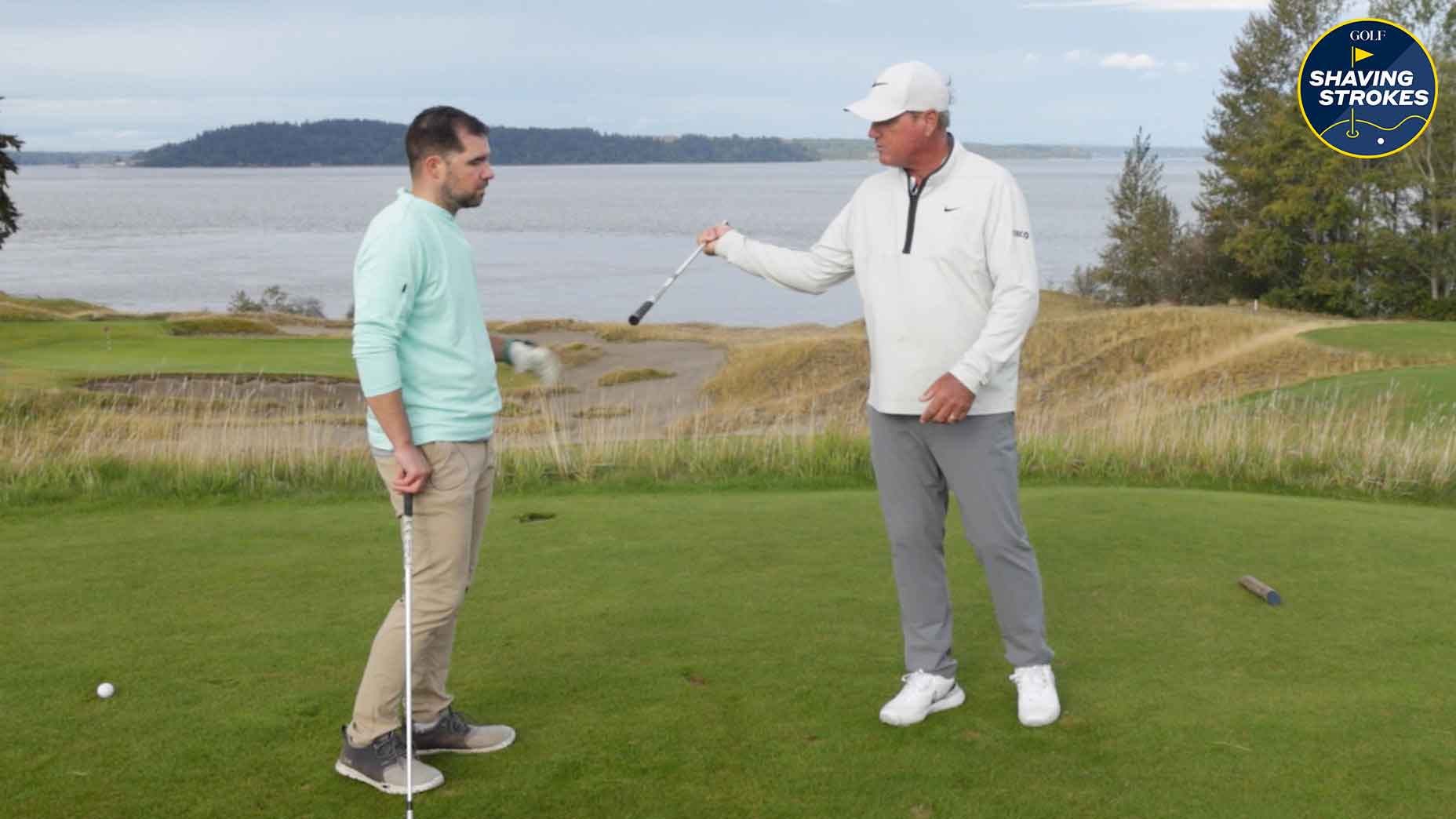3 simple techniques to expand your wedge toolbox, per top teacher
- Share on Facebook
- Share on Twitter
- Share by Email

Want better wedge play? These 3 things to expand your arsenal.
Getty Images
Welcome to Shaving Strokes, a GOLF.com series in which we’re sharing improvements, learnings and takeaways from amateur golfers just like you — including some of the speed bumps and challenges they faced along the way.
Just this morning, I had a conversation with major champion Justin Leonard. While most of it concentrated on this week’s Masters Tournament, naturally, I just had to pick his brain about some overall instruction tips, too.
One of my questions for Leonard was pretty straightforward: Is there something that every amateur can instantly do to shave strokes?
Without hesitation, he replied by saying improved wedge shots and putting are the fastest way to lower scores.
This pro’s 5-minute warm up drill will leave you hitting sticky wedge shotsBy: Nick Dimengo
Sure, it’s more fun to go bomb driver at the range or work on dialing in your approach shots, but take the advice from a 12-time PGA Tour winner and focus on the short game over anything else.
So how can you do that? With the help of GOLF Teacher to Watch Alison Curdt, who outlines three easy techniques to help expand your wedge game. Check out the below advice and start to see your wedge shots sit closer to the pin — leaving shorter putts and more opportunities to shoot low.
Want better wedge shots? Expand your toolbox!
According to Curdt, mastering the short game is the hallmark of all skilled golfers, and is the best way to see real changes in your game.
“While the driver may dazzle with its power and distance, it’s the wedges that truly separate the pros from the amateurs,” Curdt tells me. “From delicate chips to precise pitches, having a diverse array of shots at your disposal can transform your game and save crucial strokes on the scorecard.”
By following Curdt’s three tips below, you can expand your toolbox, unlock the secrets to precision and finesse around the greens, and start to hit round-saving wedge shots.
1. Embrace loft variation
One of the most effective ways to enhance your wedge play is by diversifying your arsenal of lofted clubs. While the sand wedge and pitching wedge are staples in most golf bags, adding additional loft options can provide greater versatility in different situations. Consider incorporating a gap wedge (typically around 50-54 degrees) and a lob wedge (usually 58-64 degrees) into your setup.
I was terrified of my 60-degree wedge — until I got this lessonBy: Nick Dimengo
Gap wedges fill the void between your pitching wedge and sand wedge, offering a more controlled trajectory for shots that require a bit more distance and loft than a pitching wedge can provide. Whether it’s a full swing from the fairway or a partial shot around the greens, the gap wedge excels in bridging the distance gap.
On the other hand, the lob wedge is a specialized tool designed for high, soft shots with minimal roll. Perfect for navigating bunkers, tackling tight pin positions, or executing delicate flop shots, the lob wedge adds a new dimension to your short game repertoire. With a higher loft angle, it allows you to stop the ball quickly on the green, giving you greater control over tricky lies and challenging pin locations.
Before automatically reaching for your favorite club, consider the trajectory and the roll you wish to create (as well as the degree of difficulty), then select the best tool for the job.
2. Master distance control on wedge shots
While accuracy is crucial in wedge play, mastering distance control is equally essential. Developing a keen sense of how far each wedge carries with varying swing lengths is the key to consistently hitting your targets. One effective method for honing distance control is through systematic practice and experimentation.
I suggest creating a practice routine that focuses on hitting shots of different lengths with each wedge in your bag. Start with short pitch shots and gradually work your way up to full swings. Pay close attention to the feel of each shot in relation to the body and the corresponding distance it travels. Experiment with different swing lengths and tempo to gauge their effects on ball flight and distance. Make sure to mark down your combinations to build a wedge matrix — which can serve as a guide to understand variable yardages with each club.
Additionally, utilize practice aids such as alignment sticks (available here!) or distance markers on the range to refine your accuracy. By consistently practicing distance control with your wedges, you’ll develop a reliable feel for how far each shot flies, giving you the confidence to attack pins with precision on the course.
3. Master specialty shots
In golf, the ability to execute specialty shots can be a game-changer, especially when faced with challenging lies or tight pin positions. Expand your toolbox by mastering a variety of specialty shots on wedge shots — including the bump-and-run, the flop shot, and the spinner.
The bump-and-run is a low-trajectory shot that’s ideal for navigating tight lies or firm greens. Use a less-lofted wedge (like a pitching or gap wedge), and employ a putting-style stroke to keep the ball low and rolling towards the target. This shot is particularly effective when you need to run the ball up to the hole with minimal carry.
Why you should ditch the risky flop shot and try a simple bump and runBy: Jamie Mulligan , Nick Dimengo
Conversely, the flop shot is a high-risk, high-reward shot that requires finesse and precision. Open the clubface of your highest-lofted wedge and swing with an accelerated tempo to generate maximum height and spin. This shot is useful when you need to carry the ball over obstacles or stop it quickly on the green, but it requires precise execution to avoid disaster.
Finally, mastering the spinner shot can help you hold greens and attack tight pin positions with confidence. Position the ball slightly forward in your stance, open the clubface, and make a crisp and descending strike to maximize backspin on the ball. This shot is effective for stopping the ball quickly on firm greens, or when you’re playing from tight lies around the green.
By expanding your repertoire to include these specialty shots, you’ll be better equipped to handle a wide range of situations on the golf course. By doing so, you’ll elevate your short game to new heights!

Divot Board
$99.99
View Product
Latest In Instruction

Golf.com

Nick Dimengo
Golf.com Editor












